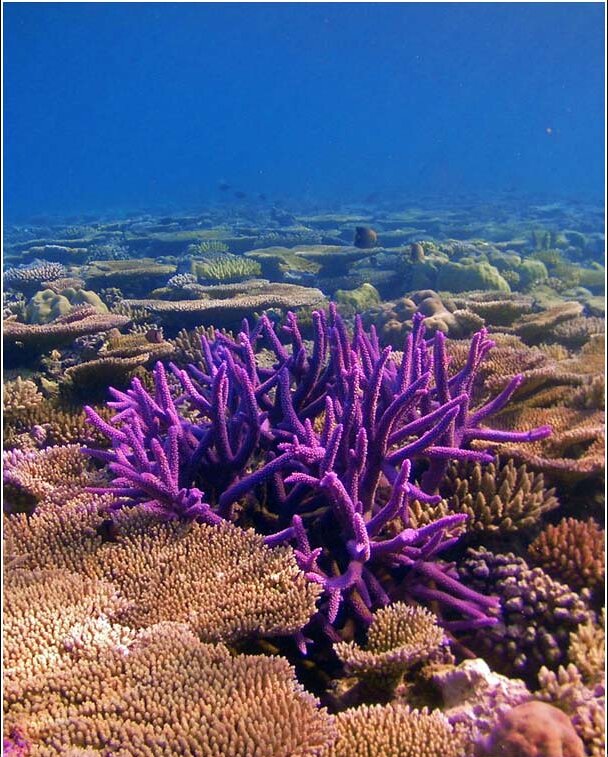Biodiversity & Environment
Significance of Dead Coral Reef
- 04 Sep 2020
- 5 min read
Why in News
According to a recent study by researchers from University of Queensland (UQ), Australia, more life can be supported by dead coral remains than live corals.
- Dead coral reefs support cryptic organisms like hidden sea creatures, including fishes, snails, tiny crabs and worms, who hide under its rubble to save themselves from predation.
Cryptic organisms
- These are organisms that are morphologically indistinguishable (identical in appearance) but are genetically distinct. Many species that are classified as single species but are found to be genetically different are called cryptic species.
- Examples of cryptic species include the African elephant. A 2001 study found the elephants were actually two genetically distinct, non-interbreeding species, the African bush elephant and the African elephant.
Key Points
- Method: The researchers designed three-dimensional-printed coral stacks called RUbble Biodiversity Samplers (RUBS) to survey cryptic organisms.
- The 3D-printed coral mimicked surrounding reef rubble and invited unwitting reef organisms to be monitored.
- By sampling the RUBS’ structures over time, the team were able to identify changes in the cryptic population.
- Findings: The researchers found the missing link in the coral reef food webs. This data fills important knowledge gaps, such as how small cryptic animals support coral reefs from the bottom of the food chain, all the way up to bigger predators.
- This also helped to know the importance of dead coral reef rubble to the ocean ecosystem.
- The RUBS technology provides a new opportunity for reef management, particularly for reef education and awareness.
- Coral Reefs:
- Coral reefs are large underwater structures composed of the skeletons of colonial marine invertebrates called coral.
- Corals extract calcium carbonate from seawater to create a hard, durable exoskeleton that protects their soft, sac-like bodies. These exoskeleton remains of millions of corals pile up with time to form coral reefs.
- The corals have a symbiotic relationship with an algae called the zooxanthellae.
- These algae live inside the coral polyp's body and provide the coral with food. The polyps, in turn, provide a home and carbon dioxide for the algae.
- These algae are responsible for the variety of colours of corals.
- Coral reefs cover less than 1% of the ocean floor but they are among the most productive and diverse ecosystems on Earth.
- They are referred to as "the rainforests of the sea" for their biodiversity,
- Death of Coral Reefs: When corals become stressed due to any changes, including pollution or global warming, they can expel algae and get bleached, meaning the ‘death’ of the coral reef.
- There has been increasing concerns of fast paced coral bleaching due to emission of greenhouse gases and climate change.
- A number of global initiatives are being taken to address the issues, like the International Coral Reef Initiative, the US Coral Reef Task Force etc.
- In india, the Zoological Survey of India (ZSI), with help from Gujarat’s forest department, is attempting a process to restore coral reefs using “biorock” or mineral accretion technology.
Way Forward
- There has been little information on the role of dead coral reefs so far. The study can help in studying the oceanic ecosystem in a more holistic way.
- The research is certainly a lesson that even dead coral reefs need to be preserved in order to protect the biodiversity that remains. The understanding of foundational structure of coral reefs might inform efforts to create artificial reefs, which may be a short-term solution to the dying coral reef problem.






